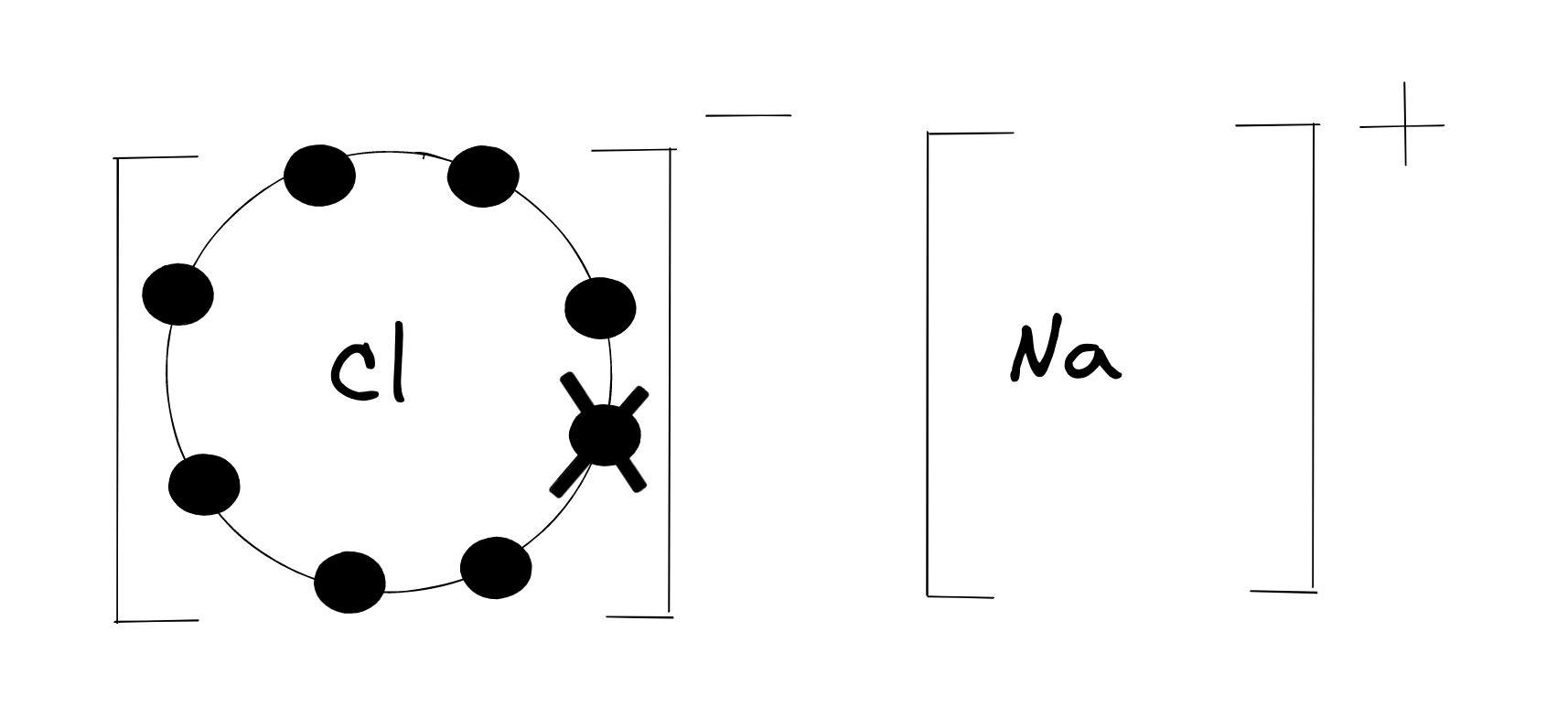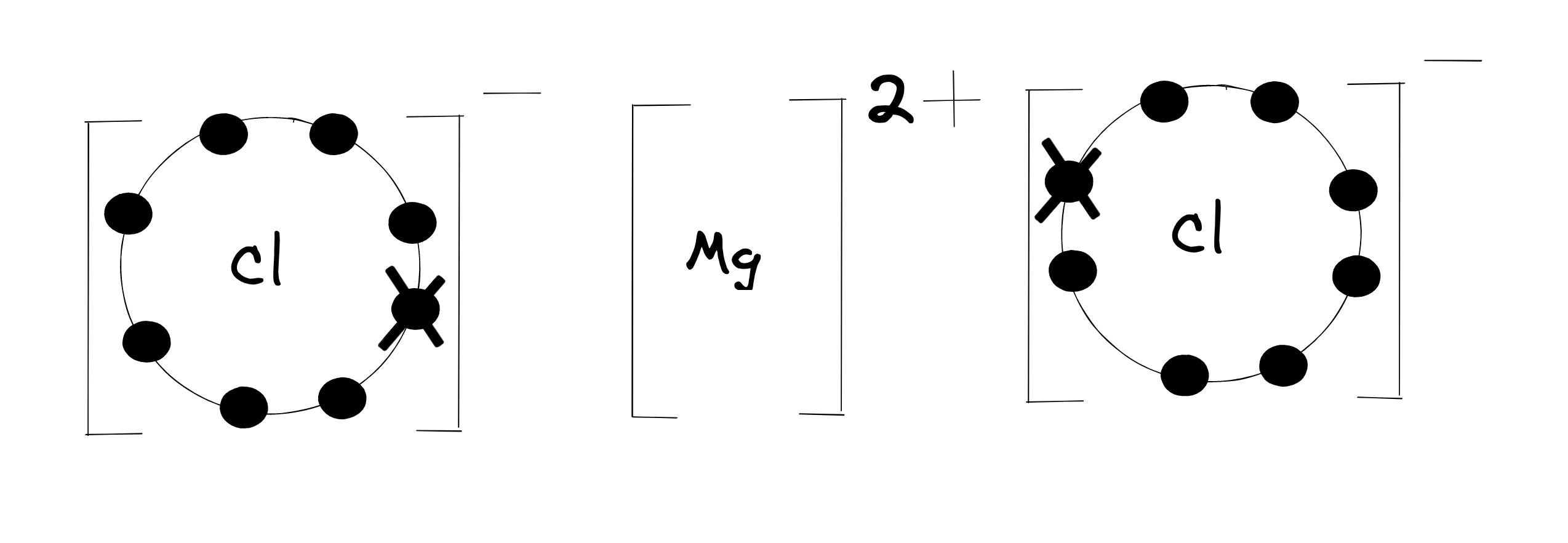-
Electrostatic force of attraction between oppositely charged(cations and anions) ions in a network
-
Consists of a metal and a non-metal combined together
-
Examples
-
- Sodium loses an electron and becomes a cation, with the stability of a noble gas
- Chloride gains an electron, and becomes an anion, with the stability of a noble gas
- Sodium loses an electron and becomes a cation, with the stability of a noble gas
-
- Magnesium loses 2 electrons and becomes a cation, with the stability of a noble gas
- Chloride gains an electron, and becomes an anion, with the stability of a noble gas
- Therefore, 2 chlorine ions bond with 1 magnesium ion
- Magnesium loses 2 electrons and becomes a cation, with the stability of a noble gas
-
-
Ions exist in a 3D, ionic lattice
-
Cannot conduct electricity as a solid
- Ions are in a fixed lattice
- Therefore, the ions/electrons are fixed and cannot move
- Charge cannot be conducted
-
Conducts electricity when liquid/molten/dissolved
- The ions do not exist in a lattice
- Therefore, they are free/mobile
- Charge can be conducted
-
High melting and boiling points
- Ions are in a fixed lattice
- Ionic bonds are strong
- Therefore, the energy required to break up the lattice is large
-
Brittle
- Ions exist in a lattice
- When a force is applied, layers of the lattice are displaced
- Therefore, ions with like charges come close to each other, and repel each other
- The lattice shatters, and is therefore brittle
-
Often soluble in water
- Depends on ESF of the lattice
- If the intermolecular forces of the molecule is greater than the lattice, the lattice is displaced and it dissolves
- If the lattice’s ESF is greater than the intermolecular forces of the molecule, it is not displaced and is therefore not soluble
-
Lewis Diagrams are known as dot-dot or dot-cross
 Sodium Chloride,
Sodium Chloride,  Magnesium Chloride,
Magnesium Chloride,